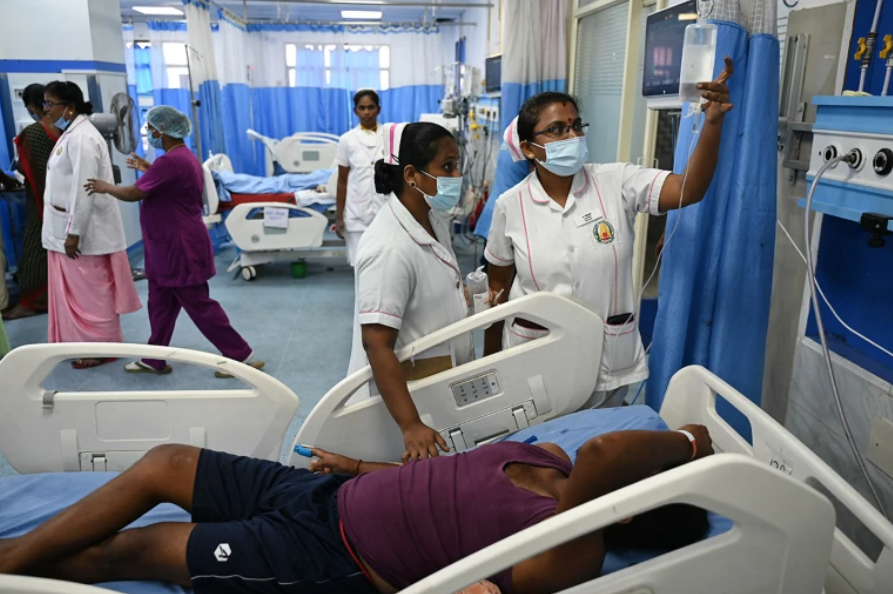Not only are these extreme events increasing in frequency, they are lasting longer and becoming hotter, too.

India is sweating through a heatwave, with thermometers in some parts of the capital recording more than 52 °C. This is the third year in a row of lethally high temperatures in April and May for the country, and climate change is increasing the likelihood of such weather extremes.
Although heat in spring is normal in India, says Krishna AchutaRao, a climate scientist at the Indian Institute of Technology Delhi, the duration and expanse of the heatwaves in 2022, 2023 and 2024 are uncommon. “Three years in a row is unusual but consistent with what we expect from climate change,” he says. The heatwaves have started earlier and are affecting a larger part of the country than in previous years. The past three years’ temperatures are also hotter than the historical trends.
Human-caused climate change underlies that variation. “Every heatwave in the world is now made hotter and more likely due to climate change,” says Mariam Zachariah, a climatologist at Imperial College London. An analysis by the World Weather Attribution (WWA) initiative published this month found that climate change made the current extreme temperatures in India 45 times more likely than without climate change. In any given year, India now has a 10% chance of being hit by an extreme heatwave in late spring. Intense heatwaves will probably be more frequent than in the past, although expecting them every year might be a stretch, says Zachariah, who worked on the WWA’s analysis. But she adds that the odds of extreme heatwaves occurring in a given year could reach around 50% if current warming trends continue.
Turning up the heat
In addition to heatwaves being hotter and more frequent, they are also projected to last longer. “There is strong evidence from our research that the heatwaves are going to start earlier in the year and extend later into the season,” says AchutaRao. The 2022 heatwave, for example, began in March, which was unusually early. Heatwaves running longer is also worrisome, as they run the risk of overlapping with the monsoon season. The rains usually offer a reprieve from the heat but if heatwaves persist and overlap with rain, the combination of heat and humidity can be particularly deadly. People who work outside are especially vulnerable in these conditions.
According to the India Meteorological Department unusually high temperatures are forecast to continue into June. Many of the country’s local governments have heat action plans in place, but these focus mainly on human health, AchutaRao says. If global temperatures continue to increase, so will the range and length of heatwaves. That means other affected sectors, such as agriculture, will need to have adaptation plans, too.
The trend is another reason to continue to fight global warming. “We cannot keep postponing our efforts to mitigate climate change,” Zachariah says.
Article Credit: nature